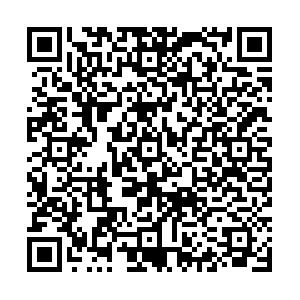From "Guo Wen" to "Guo Yu": The Subject Revolution underneath the Difference in Wording
-
摘要: 1920年,中华民国教育部通告规定将国民学校“国文”科改为“国语”科。这一转变是语文学科史上的一次重大变革,与近代社会变革密切相关。最初,“国文”作为语文学科的官方课名存在,“国语”则见于翻译文件、民间教材名称中。在当时内忧外患的背景下,救亡图存成为社会呼声,一批人倡导国语统一以开民智、强国家,又受教育救国思潮、新文化运动影响,民间陆续组织相关社团,推行白话教材、兴起国语运动、举办国语讲习所等,迫使教育部应时而变。更名后,白话文在此后的“国语”课程中得到全面的推广,“言文一致”的目标真正达成;语文学科从此前的精英教育走向大众化、实用化;“国语”课程教学内容的设置也更贴近儿童生活。Abstract: In 1920, the Ministry of Education of the Republic of China announced that "The Guo Wen course in national schools will be changed to Guo Yu... The first and second grades of national schools will be taught in Guo Yu from this autumn." Starting from the difference between "Guo Wen" and "Guo Yu", this paper traces the origin of the meaning of "Guo Wen" and "Guo Yu" and its application in modern times, exploring the reasons for the issuance of this decree in combination with the provisions of the school system and social background in different stages. Firstly, the study finds that the modern meanings of "Guo Wen" and "Guo Yu" are not divorced from the basic connotations of "Wen" and "Yu" in ancient China. Secondly, the study shows that after the Ministry of Education ordered the change of "Guo Wen" into "Guo Yu", the mandarin was still comprehensively promoted in the "Guo Yu" course despite the obstruction of the old forces. The goal of consistence between language and text has been achieved; Chinese subject from the previous elite education to the public education, and it is also in line with the inevitable trend of social development. The teaching content of the "Guo Yu" course also attaches more importance to children's literature.
-
Key words:
- Guo Wen /
- Guo Yu /
- Curriculum /
- Revolution /
- Chinese Subject
-
表 1 “国文”课程1920年以前的名称发展情况
时间 科目 1902 蒙学堂:修身、字课、习字、读经、史学、舆地、算学、体操 寻常小学堂:修身、作文、习字、读经、史学、舆地、算学、体操 高等小学堂:修身、作文、习字、读经、史学、舆地、算学、体操、古文词、理科、图画 1904 初等小学堂:修身、读经讲经、中国文字、算数、历史、地理、格致、体操 高等小学堂:修身、读经讲经、中国文学、算数、中国历史、地理、格致、图画、体操 1907 女子初等小学堂:修身、国文、算学、女红、体操 女子高等小学堂:修身、国文、算学、中国历史、地理、格致、图画、女红、体操 1910 初等小学: 修身、读经讲经、国文、算数、体操、图画、手工、乐歌 高等小学:修身、读经讲经、国文、算学、历史、地理、格致、图画、体操 1912 初等小学:修身、国文、算数、手工、图画、唱歌、男子农业课、女子手工课 1915 国民学校:修身、国文、算数、手工、图画、唱歌、体操、女子缝纫 高等小学:修身、读经、国文、算数、本国历史、地理、手工、图画、唱歌、体操 -
[1] 许慎. 说文解字[M]. 北京: 中华书局, 1978: 185. [2] 黎锦熙. 国语运动史纲[M]. 北京: 商务印书馆, 2011. [3] 王云五, 等. 论语集解义疏卷四[M]. 商务印书馆, 1937: 93. [4] 朱有瓛, 高时良. 中国近代学制史料第四辑[M]. 上海: 华东师范大学出版社, 1993: 226. [5] 陈学恂. 中国近代教育史教学参考资料[M]. 北京: 人民教育出版社, 1987. [6] 石鸥, 吴小鸥. 中国近现代教科书史上册[M]. 湖南: 湖南教育出版社, 2012: 72. [7] 吴小鸥. 文化拯救近现代名人与教科书[M]. 北京: 商务印书馆, 2015: 192. [8] 林乐知. 中外新闻[N]. 上海新报, 1869-05-08(2). [9] 刘正埮, 等. 汉语外来词词典[M]. 上海: 上海辞书出版社, 1984: 127. [10] 璩鑫圭, 唐良炎. 中国近代教育史资料汇编[M]. 上海: 上海教育出版社, 1991. [11] 周予同. 中国现代教育史[M]. 福州: 福建教育出版社, 2007. [12] 崔明海. 近代国语运动研究[M]. 安徽: 安徽师范大学出版社, 2018. [13] 胡以鲁. 国语学草创[M]. 山西: 山西人民出版社, 2014: 106. [14] 章太炎. 论语言文字之学[J]. 国粹学报, 1907, 2(24). https://www.cnki.com.cn/Article/CJFDTOTAL-HSXX202002012.htm [15] 丁守和. 中国近代启蒙思潮[M]. 北京: 社会科学文献出版社, 1999: 477. [16] 蒋梦麟. 过渡时代之思想与教育[M]. 北京: 知识产权出版社, 2018: 1. [17] 黄遵宪. 日本国志下卷[M]. 天津: 天津人民出版社, 2005: 810. [18] 陈学然. 再造中华: 章太炎与"五四"一代[M]. 上海: 上海人民出版社, 2019: 181. [19] 倪海曙. 清末汉语拼音运动编年史[M]. 上海: 上海人民出版社, 1959. [20] 中国人民政治协商会议全国委员会文史资料研究委员会. 文史资料选辑第15辑[M]. 北京: 中华书局, 1961: 192. [21] 郑逸梅. 书报话旧[M]. 上海: 学林出版社, 1983: 82. [22] 高平叔. 中国教育名著丛书·蔡元培教育论著选[M]. 北京: 人民教育出版社, 2017: 262. [23] 林治金. 语文教育论文选编上[M]. 青岛: 青岛出版社, 2001: 652. [24] 李伯棠. 小学语文教材简史[M]. 山东: 山东教育出版社, 1985: 184. [25] 林治金. 语文教学大纲汇编[M]. 青岛: 青岛出版社, 2001. [26] 徐家良. 小学语文教育学[M]. 北京: 高等教育出版社, 1997. -





 下载:
下载:


